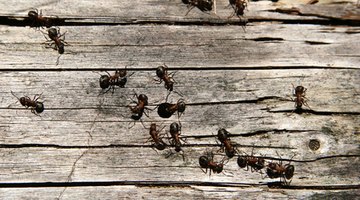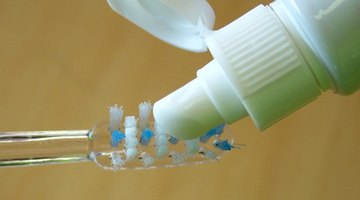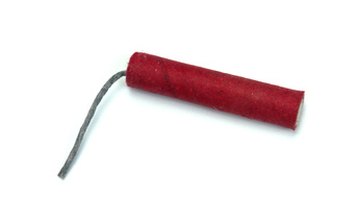Diatomaceous Earth Vs. Fullers Earth
Table of Contents
Fuller’s earth and diatomaceous earth are sold commercially for use as a filtration medium, insecticide, dietary supplement and for many other applications. Although they share many of the same uses and are both composed primarily of silica, these two substances form in very different ways.

One is a type of clay while the other is formed from microscopic organisms called phytoplankton.
Fuller's Earth

Fuller's earth, so named due to its traditional use by textile workers (fullers), is a type of clay composed primarily of aluminum silicates. Once crushed and dried, fuller's earth possesses an extraordinary ability to adsorb impurities such as oils and grease. Its purpose in the textile industry has historically been to clean raw wool and other fabrics. It is still used for this purpose today, as well as in cosmetics, medical settings and as the primary ingredient in cat litter.
Diatomaceous Earth

Diatomaceous earth is a sedimentary rock also known as diatomite. In contrast to fuller's earth, which can be one of several types of silica-rich clay, diatomite is actually composed of the compressed skeletons of aquatic plants called diatoms. Diatoms are microscopic, unicellular plants whose cell walls, also called tests, are composed of silica. Like fuller's earth, diatomaceous earth has a number of uses. The most common are as a filtration medium or as a mild abrasive.
Extraction

Both fuller's and diatomaceous earth must be mined and processed before they can be used in industry or the household. Open pit mining is the norm for these substances, rather than the shaft mines used to extract coal and gold. Georgia and Florida are the major producers of fuller's earth in the United Sates. Santa Barbara County in California leads U.S. production of diatomaceous earth, but there are also mines in Nevada, Washington and Oregon.
Interesting Facts

Diatomaceous earth and fuller's earth both have an interesting history. Alfred Nobel used diatomaceous earth to make nitroglycerin more stable, and therefore more safe to handle. By mixing nitroglycerin with diatomaceous earth, Nobel created the substance that made his reputation: dynamite. Fuller's earth has a literary history thanks to author Sir Arthur Conan Doyle. In the Sherlock Holmes story "The Adventure of the Engineer's Thumb," counterfeiters try to get a man to repair their printing press by telling him they use it to press blocks of fuller's earth.
Warning

While it is true that fuller's and diatomaceous earth are both commonly used as food additives, care should be taken when purchasing these products for use at home. Many types of these products are available to purchase online, and you should make absolutely certain that the product you buy is labeled "food grade." Products intended for use in industrial settings can be extremely toxic if ingested or applied to the skin.
References
Writer Bio
Eric Tosso began his professional writing career in 2010. He works as a freelance journalist based in the southeastern United States and enjoys writing about science, food, the arts and travel. Tosso holds a Master of Science in coastal marine and wetland studies from Coastal Carolina University and is pursuing a Master of Arts in journalism from the University of Alabama.
Photo Credits
- ant image by ana malin from Fotolia.com
- ant image by ana malin from Fotolia.com
- cat image by petar Ishmeriev from Fotolia.com
- brush with toothpaste image by Keith Frith from Fotolia.com
- excavation image by apeschi from Fotolia.com
- pétard rouge image by Unclesam from Fotolia.com
- poison symbol image by patrimonio designs from Fotolia.com
More Articles



